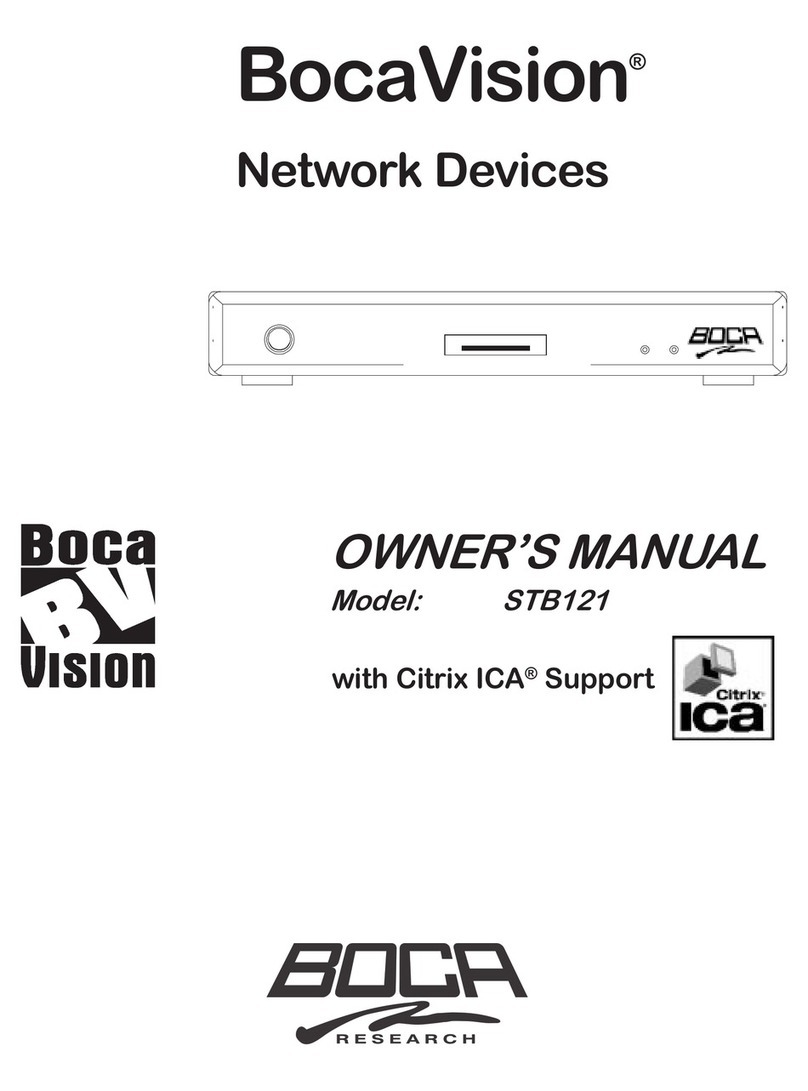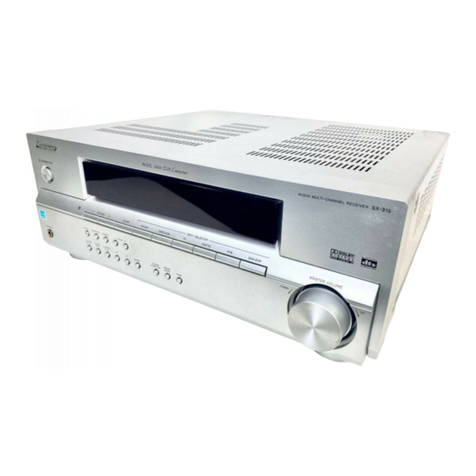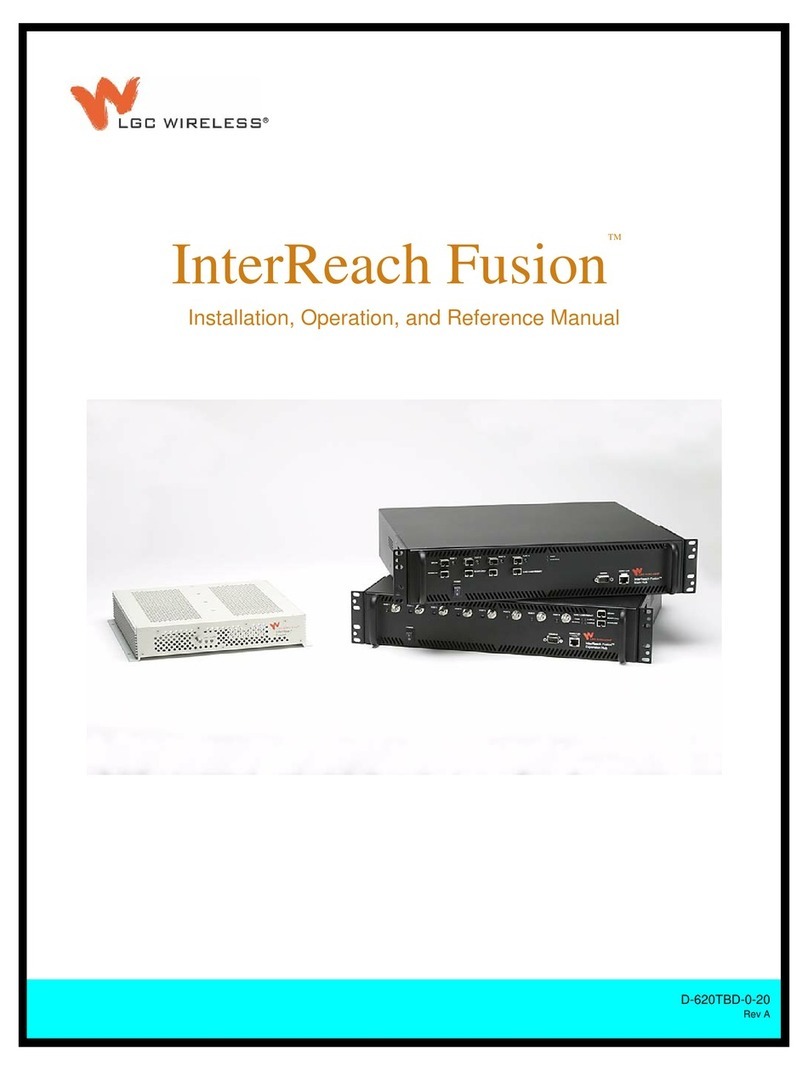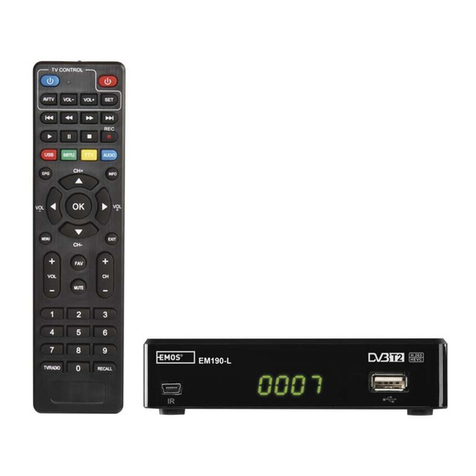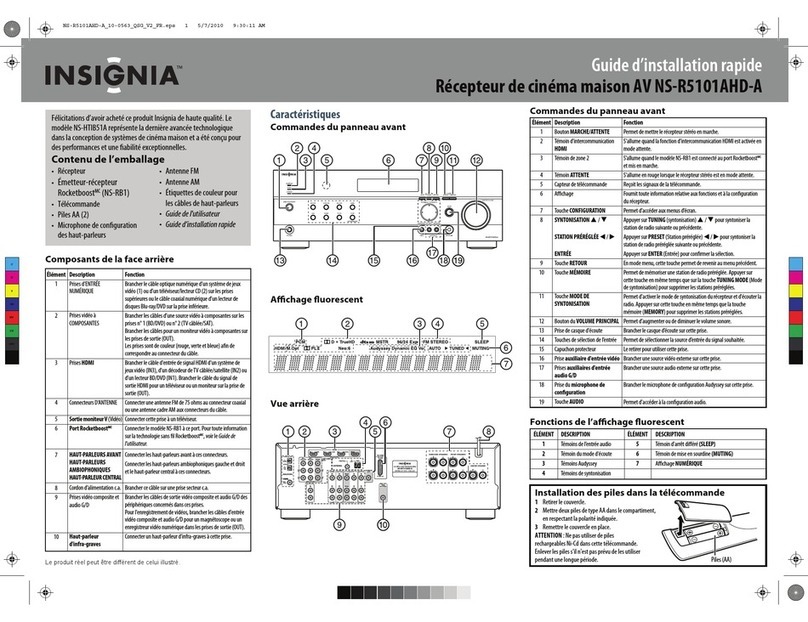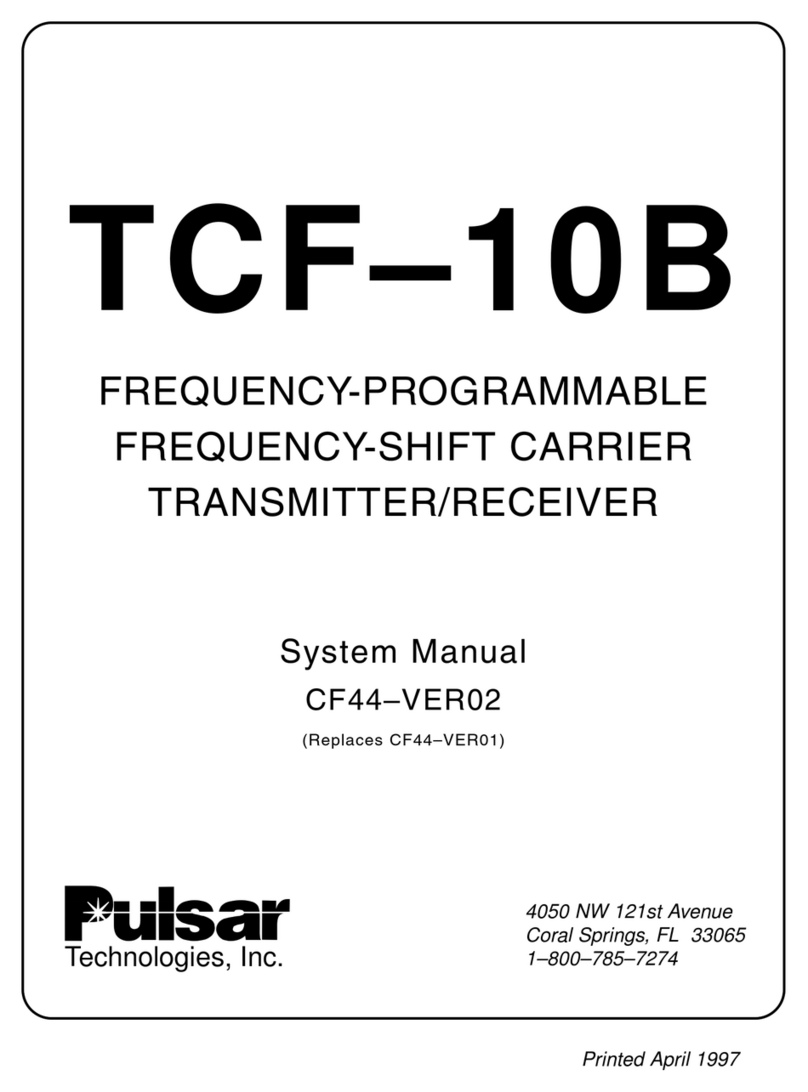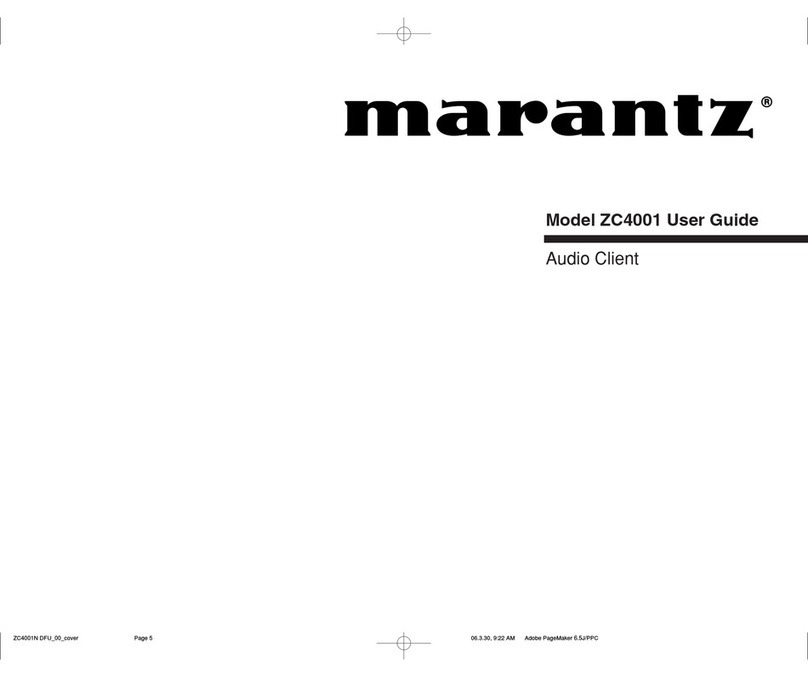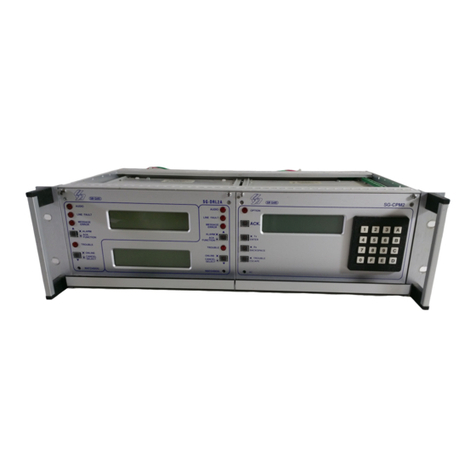Boca SL 65 User manual

Overview of equipment
Front side of the receiver
Rear side of the receiver
Remote control

Overview of equipment
Front side of the receiver
1LED display Shows channel location
2–Infrared sensor for the signal of the remote control
3LED POWER LED is illuminated if the receiver is switched on or in
standby mode
4OK Confirm
5MENU Invokes main menu
6VOL+ Increases volume
7VOL– Decreases volume
8CH+ Switches to the next higher channel location
9CH– Switches to the next lower channel location
10 POWER Switches on and switches to the standby mode
Rear side of the receiver
1AUDIO R Right analogue audio connection
2AUDIO L Left analogue audio connection
3VIDEO Analogue video connection
4VCR SCART connection for the video set
5TV SCART connection for the TV set
6RS 232 Serial port
7OPTICAL Digital optical audio output
8COAXIAL Digital coaxial audio output
9S-VHS S-Video connection
10 100–240 V~
50/60 Hz, 30 W
Mains socket
11 ON/OFF Mains switch
12 ANT-OUT Coaxial connection for a second satellite receiver
13 ANT-IN Coaxial connection for the antenna cable

Remote control
1POWER Switches on and switches to the standby mode
2F3 (yellow key) The corresponding function is displayed on the
screen
3F4 (blue key) The corresponding function is displayed on the
screen
4TV/=Switches between TV and radio mode
5A/B Selects the audio track
6P+ /P– Changes to the next higher or lower channel /
selects menu item
7MUTE Turns off sound
8RECALL Switches to previously selected channel
90–9 Selects channel directly, numerical input
10 -- / -- Two-digit channel location input
11 INFO Displays reception data of the current channel
12 EPG Electronic program guide
13 V–/V+ Decreases or increases volume / selects setting
14 OK Confirms menu or menu item
15 MENU Invokes main menu
16 EXIT Exits menu or menu item
17 F1 (red key) The corresponding function is displayed on the
screen
18 F2 (green key) The corresponding function is displayed on the
screen

DVB-T Receiver SL 65
Operating manual
Version 1.4, as of 10.08.2005

Preface
This operating manual will help you in the
•appropriate,
•safe and
•favourable
usage of the digital terrestrial satellite receiver, in short, the
“receiver”.
We assume that the user of the receiver has overall knowledge
regarding the handling of audio and video equipment.
Each person who
•installs,
•connects,
•operates,
•cleans or
•disposes of
this receiver must be familiar with the entire content of this operating
manual. Always keep this operating manual in the proximity of the
receiver.
This device is labelled with the CE mark and with the GS mark of the
TÜV Rheinland (Technical Supervisory Association).
Style features
Specific style features have been given in different sections of the
operating manual. Thus, you can easily differentiate whether it
concerns
normal text,
•enumerations or
actions.
.

Contents
Overview of equipment ....................................................................... 2
Remote control ................................................................................... 3
Preface ............................................................................................... 5
Style features .................................................................................... 5
Contents ............................................................................................ 6
Safety instructions ........................................................................... 8
Basic safety instructions .....................................................................8
Explanation of safety instructions ..................................................... 10
Appropriate usage ............................................................................ 11
Scope of supply .............................................................................. 12
Description ...................................................................................... 13
Connecting the receiver................................................................. 15
Connecting the receiver to the antenna............................................15
Connection with the SCART cable ...................................................16
Connection with the YUV cable ........................................................ 18
Connection with the S-Video Cable (S-VHS) ................................... 20
Connection with the Cinch cable ...................................................... 22
Connection of an Audio-Digital Receiver.......................................... 24
Connecting the receiver to the mains supply....................................27
Getting started ................................................................................ 28
Switching on and off ......................................................................... 28
Remote control ................................................................................. 28
Initial installation with the installation assistant ................................ 30
Operation ......................................................................................... 31
Basic steps ....................................................................................... 31
Additional functions...........................................................................32
Screen-inlays while switching a channel ..........................................34
Invoking menus................................................................................. 34
Menu structure.................................................................................. 35
Navigating in menus and sub-menus ............................................... 35
Entering basic settings .................................................................. 37
Setting the language of the user interface (OSD) ............................37
Scanning to add new channels.........................................................38
Settings............................................................................................. 41

Timer / Sleep timer ........................................................................... 47
Changing the programme order .......................................................50
Uninstalling the receiver ................................................................ 51
Cleaning........................................................................................... 51
Troubleshooting ............................................................................. 52
Technical specifications ................................................................ 54
Manufacturer ................................................................................... 56
Declaration of conformity .............................................................. 57
Glossary .......................................................................................... 58

Safety instructions
8
Safety instructions
Please read the safety instructions carefully before operating the
receiver.
Please follow all warnings and instructions on the equipment and in
the operating manual.
Basic safety instructions
Electrical connection
•Disconnect the receiver from the power source in case of
operational disruptions. Please note: The receiver will remain live,
even if it is turned off with the mains switch on the rear side.
•Do not expose the receiver to rain or any kind of humidity to avoid
risk of fire and electric shock.
•Never open the casing. Otherwise, there is a risk of electric
shock.
•Connect the receiver only to a professionally installed mains
socket of 100–240 V, 50–60 Hz.
•Pull out the mains plug from the socket if the equipment is not in
use for a longer period of time. Only pull at the mains plug, not at
the cable.
•If foreign bodies or fluids enter the receiver, immediately pull out
the mains plug from the socket. Ask a qualified person to check
the equipment before operating it once again. Otherwise, there is
arisk of electric shock.
•Ensure that the power source (socket) is easily accessible.
•Do not bend or crimp the mains cable.
•If the mains cable is damaged, the receiver must be repaired by
an expert before reusing it. Otherwise, there is a risk of electric
shock.
•Never allow children to operate the receiver or to play with the
antenna unit unless supervised.
•Always ask qualified personnel to carry out maintenance jobs.
Otherwise, you are putting yourself and others at risk.

Safety instructions
9
Suitable location
•Place the receiver on a stable and even base.
•Avoid proximity to:
-heat sources, like e. g. heaters,
-naked flames, like e. g. candles,
-devices with strong magnetic fields, like e. g. loudspeakers.
-Never place receptacles filled with liquid (e. g. vases) on the
receiver
•Avoid direct sunlight and places with an extremely high amount of
dust.
•Never cover ventilation slits. Ensure adequate ventilation of the
receiver.
•Do not place any heavy objects on the receiver.
•Humidity may settle in the receiver if it is brought into hot
surroundings from a cold one. In this case, wait for about an hour
before operating the equipment.
•Arrange the mains and antenna cable in such a manner that no-
one steps or trips over them.

Safety instructions
10
Correct battery handling
•Batteries may contain toxic agents. Ensure that batteries are not
within the reach of children. Children may eat and swallow
batteries.
•Batteries that are getting discharged may damage the remote
control. If the receiver is not in use for a longer period of time,
remove the batteries from the remote control.
•Batteries may contain toxic agents that are hazardous to the
environment. Therefore, dispose of the batteries immediately
according to the prevailing statutory regulations. Never throw the
batteries into normal household waste.
Disposal
Never throw the digital terrestrial receiver or the
batteries in normal household waste. Ask your
municipal authorities or local government about
different methods for disposing of the equipment in
an eco-friendly and proper manner. Hand over
used batteries to a collection centre.
Explanation of safety instructions
The following categories of safety instructions are included in the
operating manual:
Danger!
Instructions with the word DANGER give a warning against
possible personal injuries.
Caution!
Instructions with the word CAUTION give a warning against
possible material or environmental damages.
These instructions contain special information for
commercial usage of the receiver.

Safety instructions
11
Appropriate usage
The digital terrestrial satellite receiver SL 65 receives uncoded digital
channels (free-to-air) in a covered area. It is exclusively meant for
this purpose and should only be used for the same. This also
includes paying attention to all information in this operating manual
especially that of safety instructions.
Any other usage is considered to be improper and may lead to
material damages and even personal injuries. Moreover, it will result
in the immediate loss of warranty.
The manufacturer does not bear any liability for damages caused
due to improper usage.

Scope of supply
12
Scope of supply
Check the scope of supply after purchase.
The scope of supply may vary according to the type of the receiver.
Please follow the information on the packaging.
No. Pieces Description
1 1 Receiver
2 1 Remote control
3 2 Batteries type LR 03/AAA/1.5 V
4 1 SCART cable
– 1 Operating manual (not shown above)

Description
13
Description
With this receiver you are able to receive uncoded digital terrestrial
channels (free-to-air) via a house or indoor antenna.
During the first operation, you will be led through the menu
automatically. Required settings are made or you are asked for
information. However, the receiver can also search for new channels
at a later time as soon as you initiate the automatic scanning of
broadcasting stations. All receiver settings can be done easily using
the user interface (menu) on the TV screen.
The multilingual user interface supports the following
languages:
•German
•English
•Spanish
•French
•Swedish
•Finnish
•Danish
Other features of the equipment:
•Software update via the RS 232 connection on the rear side of
the device.
•Short switching time, fast boot process when switching on the
receiver
•Saves the channel last watched (Last Channel Memory)
•Fully compatible with MPEG-2 and DVB
•MPEG Video (MP@ML), MPEG-1 Audio Layer1, Layer 2
•Symbol rate 1-35 MS/s and 50-860 MHz input frequency
•7keys at the frontage
•Plug & play
•100–240 V, 50/60 Hz mains connection
•Installation assistant, convenient initial installation with help

Description
14
•Child lock
•Automatic scanning of broadcasting stations
•Analogue sound output through Cinch connector (stereo), volume
adjustment possible via remote control
•RCA video output Cinch, S-VHS output
•AC3 coaxial output (digital audio)
•AC3 optical output (digital audio)
•2Euro SCART connections, one for the TV set and one for the
video set
•TV SCART with CVBS, RGB and YUV
•Loop-through function for the terrestrial antenna
•Super fast videotext with a memory of 800 pages
•Digital DVB radio reception, background image for radio
(background display)
•Additional channel information is displayed when the channel is
changed.
•LAST CHANNEL MEMORY function
•Screen aspect ratios are set automatically or can be set manually
to 4:3 or 16:9
•Multi-functional timer 8x linked with EPG
•Electronic Programme Guide EPG (up to 14 days in advance,
channel-dependent)
•Automatic selection of the TV standard from NTSC/PAL/SECAM
with video converter

Connecting the receiver
15
Connecting the receiver
Connecting the receiver to the antenna
Caution!
Remove all plastic wraps from the receiver before connecting it to
the antenna. Otherwise the receiver can suffer damages.
Danger of overheating.
Connect the receiver to the antenna using an antenna cable.
The coaxial cable is not included in the scope of supply.
Caution!
Connect the receiver to the mains supply only after you have
connected it to all equipment and the antenna properly. Otherwise
the receiver can suffer damages.
The wire netting and the inner core of the coaxial cable carry
current during operation.

Connecting the receiver
16
Connection with the SCART cable
Insert the SCART cable in the SCART socket “TV” on the
receiver.
Connect the SCART cable to the TV set. Follow the operating
manual of the TV set.
Insert the SCART cable in the SCART socket “VCR” on the
receiver if you want to connect a video set.
Connect the SCART cable to the video set. Follow the operating
manual of the video set.
Insert the Cinch connectors of the Cinch cable in the “AUDIO R”
and “AUDIO L” sockets of the receiver if you want to connect a
stereo system.

Connecting the receiver
17
Connection diagram

Connecting the receiver
18
Connection with the YUV cable
If you own a TV set with YUV connections, you can connect it via the
SCART socket “TV“ to the receiver. For this purpose, you need a
YUV cable with YUV connectors at one and a SCART connector at
the other extreme.
Connect the YUV cable (not included in the scope of supply) to
the YUV connectors of the TV set.
Connect the SCART connector of the YUV cable to the SCART
socket “TV“ on the receiver.
Follow the indications in the operating manual of the TV
set.
Connect the SCART cable to the SCART socket “VCR” on the
receiver if you want to connect a video set.
Follow the indications in the operating manual of the video
recorder.

Connecting the receiver
19
Connection diagram

Connecting the receiver
20
Connection with the S-Video Cable (S-VHS)
Caution!
Strictly follow instructions for connecting the S-video cable
(SVHS) given in the operating manual of your TV set.
The S-Video cable is not included in the scope of supply.
Insert the S-Video cable in the “S-VHS“ socket of the receiver.
Connect the S-Video cable to the TV set.
Insert the Cinch connector of the Cinch cable in the “AUDIO-R“
and “AUDIO-L“ sockets of the receiver.
Connect the Cinch cable to the TV set.
Insert the SCART cable in the SCART socket “VCR” of the
receiver if you want to connect a video set.
Connect the SCART cable to the video set.
Follow the operating manual of the video set.
Table of contents
Other Boca Receiver manuals
Popular Receiver manuals by other brands
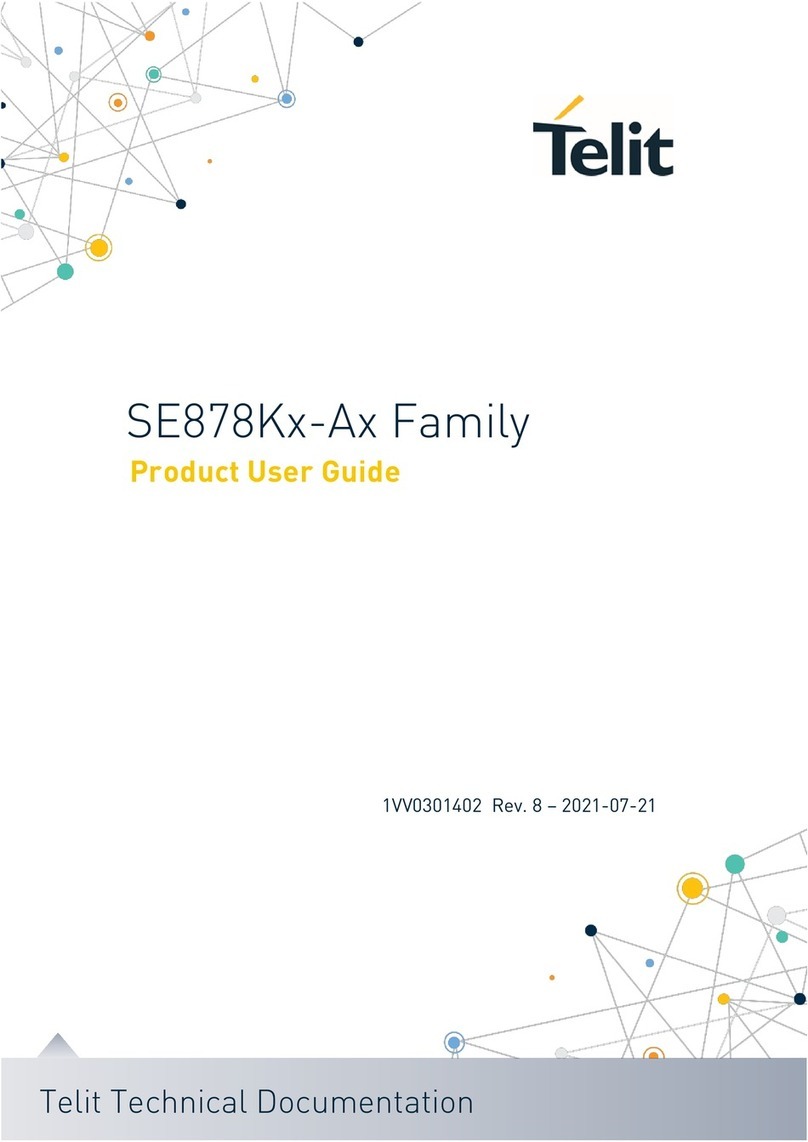
Telit Wireless Solutions
Telit Wireless Solutions SE878K -A Series Product user guide
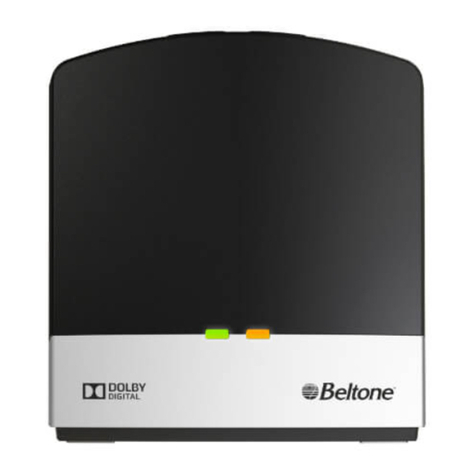
Beltone
Beltone TV Link 2 Instructions for use

Hama
Hama 00053174 operating instructions
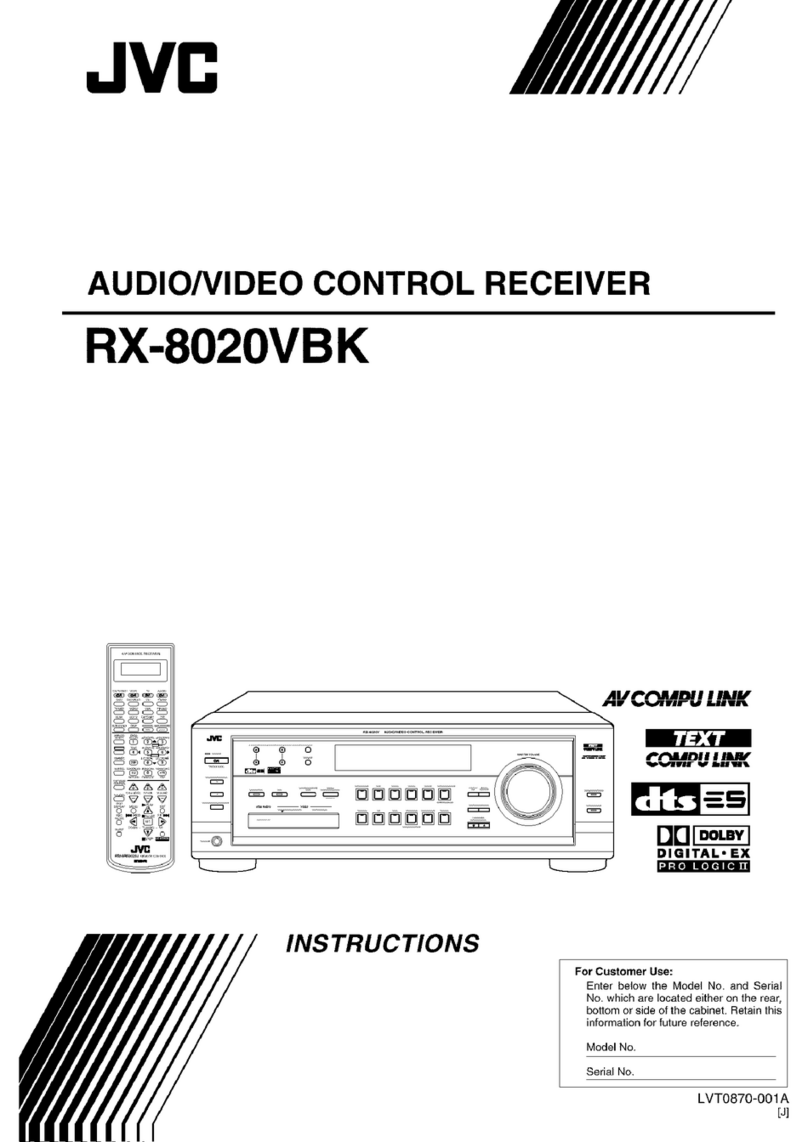
JVC
JVC RX-8020VBK instructions
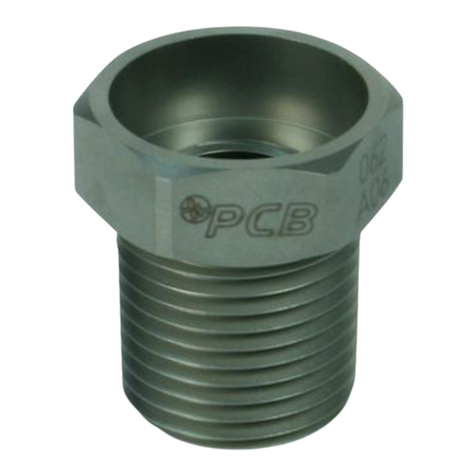
PCB Piezotronics
PCB Piezotronics 062A06 Installation and operating manual
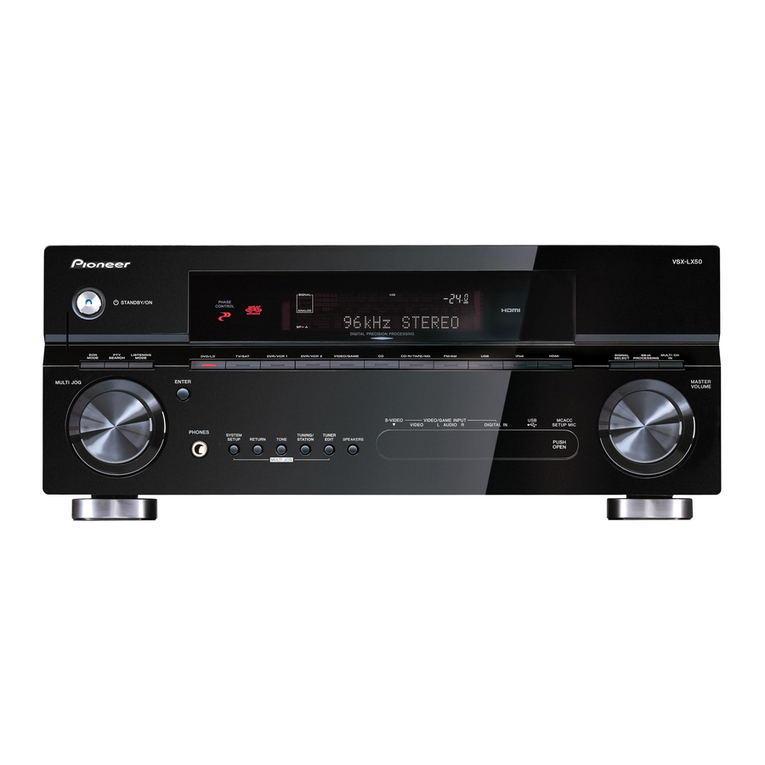
Pioneer
Pioneer VSX-LX50 operating instructions
